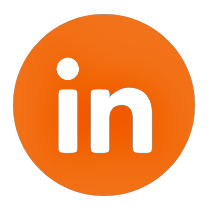 This week while I was doing a sales training session in Charlotte, I got a question that I’ve gotten dozens of times before. “When I’m meeting with a prospect, is it ok to take notes?” While the argument could be made that taking notes could be viewed as a way to show respect and attentiveness to getting “it” right; my experience is that it can be potentially detrimental, lazy and off-putting. I know that may sound harsh, so let me explain.
This week while I was doing a sales training session in Charlotte, I got a question that I’ve gotten dozens of times before. “When I’m meeting with a prospect, is it ok to take notes?” While the argument could be made that taking notes could be viewed as a way to show respect and attentiveness to getting “it” right; my experience is that it can be potentially detrimental, lazy and off-putting. I know that may sound harsh, so let me explain.
Let me start by saying, many years ago I was GUILTY. I was a note-taking fool. I would go out on an appointment and come back with pages and pages of notes. I thought that the more I wrote down, the better. Of course, I usually asked for permission to take notes, but does that really matter?
At some point, I had a dawning realization. Was my obsessive note-taking keeping me from being a better listener? And was it making me lazy when flexing my memory muscle? So I decided to experiment and test my hypothesis.
The timing was perfect. I was referred to a mid-sized printing operation with a sales team of 12 folks. The Vice President of Sales wanted to get double-digit growth out of his salespeople. He had an experienced team that was doing well, but he thought that there was room for improvement.
I arrived at the meeting with no portfolio, notebook or briefcase. Not even a pen. It was me and a couple business cards tucked away in my breast pocket. When the VP came to the lobby to meet me, he explained that the President of the company was also interested in sitting in on the meeting, so we proceeded to his office.
The meeting went well. I asked all the questions I needed to ask to fully understand their situation. I listened attentively and actively. At the end of the meeting, the President said, “Can you put together a proposal for us?”
I replied that I could pull that together and I immediately set up a time to meet with them the following week to review the proposal in person. It’s always my intent to do another face-to-face meeting, instead of emailing a proposal, when possible for a couple of reasons. First, I want to have another opportunity to build the relationship deeper and second, I want to be able to get their immediate feedback from the proposal so I have a chance to respond to concerns, questions, etc.
I arrived the following Tuesday and was escorted into the President’s office by the VP again. I handed them each a copy of my proposal and explained that I wanted to walk through it with them to make sure that I fully understood what they shared and that I “got” all I needed to support my recommendations.
I started my proposal with a section I called a “Situation Summary.” In it, I bullet-pointed all of the key information I felt was relevant to understanding their sales situation including their sales objectives, key information about their sales team, their metrics, challenges they face, current and past sales performance, etc.
As I walked through the bullet points, I noticed the two of them giving each other side glances. I even detected a slight smirk on their faces. Curious, I stopped and said, “Ok guys, apparently there’s an inside joke going on here. Want to let me in on it?”
The VP laughed and said, when you left last week, Michael (the President) turned to me and said, “He didn’t take any notes. Do you think he got all that we shared with him?” And just seeing your summary, it’s clear that you got everything we said and more!
So here are a couple of valuable lessons I’ve learned from NOT taking notes.
Understand why you take notes and fix it: For me, I was afraid that I wasn’t going to remember everything that I needed to remember without filling pages of notes. My appointments usually last over an hour and I’m gathering tons of information including lots of specifics including experience levels and specifics on sales team members, sales numbers, percentages for revenue growth, profit margins, etc.
The fact is that I took notes because I didn’t have confidence in my memory. Like anything else, you have to focus on improving to get better at anything. Before you can get better, however, you have to shift your belief. I found that by starting to believe in my ability to remember, I was then able to focus on my memory skills and improve them.
Focus on actively listening: Active listening requires you to be 100% engaged with the person or people you’re communicating with. By taking notes, I was diverting (although only for split seconds at a time) my attention away from the other person. I would lose eye contact momentarily as I scribbled down the right number or phrase. Each diversion by itself didn’t seem like a big deal, but how much better would I connect if I didn’t have that distraction?
I have found that since I stopped note-taking, I have stayed more connected in conversations. I am more present and engaged. I’ve actually improved my listening skills and am able to connect with others at a deeper level.
Of course, there is an addendum to my process. As soon as I leave the meeting and get back to my office, I type out all my notes from my meeting so I can enter them into my client file and refer back to them as needed. I actually like the activity of writing because it allows me to be a bit more thoughtful and insightful as I type. For those who want to maximize their travel time, you can record your notes and use an app that transcribes. If you use Evernote’s recording function, Quicktate is your go-to app for transcription. They have monthly and pay-as-you-go options. There are lots of other choices out there for any on-the-go types who prefer to record their notes.
Bottom-line, I strongly urge you to leave your portfolio and pen behind the next time you head out for a big sales appointment if you want to improve your odds of getting the deal. My closing ratio for new clients over the past decade is over 90%. I attribute much of that success to how well I understand and listen to my prospects now that I’m note-free. By the way, I was hired by the VP and President on the spot at the follow-up meeting.




